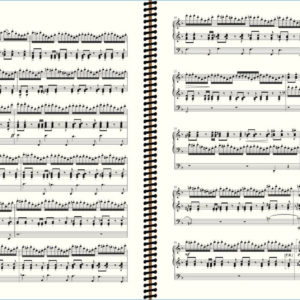Symphony No. 5 was completed in 1879 and published that same year along with symphony No. 6 (both part of Opus 42). To me, this symphony is somewhat “Beethovenian”: The first movement’s playful theme gives rise to a series of variations; the movement’s masterful development, which ends with the theme valiantly returning, avoids any feeling of academicism; The Allegro Cantabile seems willing to inspire wistfulness, and the Andantino drives on the listener to new atmospheres. Finally, the Adagio comes as a “calm before the storm”, preparing for the brilliant and famous Toccata.
A new edition appeared in 1887, without any revision, also including the newly composed symphonies No. 7 and No. 8, as well as revised versions of the four symphonies of Op. 13. Op. 13 and Op. 42 (symphonies No. I-VIII) then underwent numerous revisions throughout Widor’s lifetime and were the subject of several successive editions (1888-1892, 1900-1901, 1911, 1920, 1928-1929). It is the text of the last edition that is used here (Leduc, ~1929).
Page turn in the Toccata
No bar can be found where a hand is free. Fortunately, it is possible to arrange this famous movement on four pages, and therefore to limit page turns to a single one. The turn has been positioned between bars 33 and 34, juste after passing from the ‘Positif’ to the ‘Récit’. Personally, when I play the piece for a service, I release my left hand in the middle of bar 32 to turn the page while still playing on the ‘Positif’. It is certainly a last resort, and doing this somewhat distorts this passage. In case of a concert, it will obviously be necessary to have an assistant turn the page.
Content/Inhalt:
p. 2 : I – Allegro vivace
p. 12 : II – Allegro cantabile
p. 19 : III – Andantino quasi allegretto
p. 23 : IV – Adagio
p. 24 : V – Toccata






